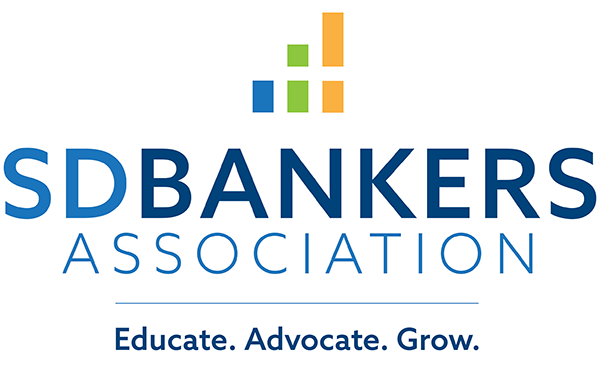ABA Advocacy Stops FCU Membership Rule Evasion
The American Consumer Council revealed this month that the National Credit Union Administration has for nearly a year been conducting a “quality control review” of the council and other associations that partner with federal credit unions for purposes of growing membership. NCUA’s review comes after ABA advocacy last year.
Almost 50 FCUs were allowing anyone to join through ACC, ABA said in a letter to NCUA in July 2013. “These federal credit unions have partnered with ACC for the express purpose of qualifying individuals who otherwise are ineligible for credit union membership.”
NCUA is reviewing ACC to see whether it complies with the agency’s “totality of the circumstances” test for associational common bonds. During the review period, NCUA has not acted on between 12 and 15 applications from credit unions to add ACC as an associational select employee group. According to ACC, thousands of people who are otherwise ineligible for credit union membership have been blocked from joining during the audit. Read ABA’s letter.
FCS Overstates Loans to Young, Beginning, Small Farmers
The Farm Credit System and its regulator are inflating the numbers of loans it makes to young, beginning and small farmers -- and thus overstating the extent to which the FCS meets its statutory mandate -- Bert Ely reported yesterday in ABA’s Farm Credit Watch e-bulletin.
Because of the tax advantages they enjoy, FCS lenders are required to have a YBS program that serves farmers 35 or younger, farmers with less than 10 years of experience and farmers with annual gross agricultural sales under $250,000. But YBS loans are “double- and triple-counted,” Ely explained. YBS loans are also counted even if the farmer no longer meets the criteria; for example, “a 15-year mortgage extended to a 34-year old farmer will get counted as a loan to a young farmer until that farmer turns 49,” he noted.
With less than 120,000 farmers age 34 or younger, the FCS reports more than 170,000 loans to young farmers – suggesting “that every ‘young’ farmer in America has at least one FCS loan or, alternatively, some young farmers have several FCS loans while other young farmers have none,” Ely noted. “The [Farm Credit Administration] could easily eliminate this gross exaggeration of the FCS’s YBS lending but so far it has refused to do so.” Read Farm Credit Watch.
Former SDBA President Named CEO/President of Pierre Hospital
Bob Sutton, former president of the SDBA, is the new CEO and regional president of Avera St. Mary’s Hospital in Pierre. Sutton replaces Paul Ebmeier, who has accepted a leadership position with Avera Medical Group as vice president of strategy.
In his 23 years in Pierre, Sutton has been active in different organizations and projects. He previously was president of the South Dakota Community Foundation based in Pierre and served as SDBA president from 1998 to 2002. Sutton has served on several statewide boards and organizations and is currently a member of the South Dakota Board of Regents.
Sutton has been with Avera since 2013. His responsibilities will cover Avera’s clinics, hospitals and long-term care facilities within the Pierre region.
Banks, Servicers Broaden Commitment to Service Members
Several banks and mortgage servicers on Tuesday announced a voluntary initiative with the White House to make it easier for active-duty service members to refinance their home loans to lower rates and payments. The initiative will help service members receive benefits they may not have known they were eligible for.
Under the initiative, the firms -- including Bank of America, Citigroup and Wells Fargo -- will work at least quarterly with the Defense Department to identify active-duty service members and their spouses who would qualify for rate reductions under the Servicemembers Civil Relief Act. They will proactively contact the eligible service members and simplify the application process. Read more.
ABA Praises MSRB Rule Revisions, Offers Suggestions
ABA on Monday praised the Municipal Securities Rulemaking Board for re-proposing Rule G-42 in such a way that “significantly increases the ability of banks to continue to provide services to municipal entities within the scope of the new municipal adviser regulatory regime.” The MSRB was responsive to previous ABA comments, the association said.
ABA sought further clarification of the rule’s scope and asked the MSRB to modify its treatment of principal transactions. ABA also urged the MSRB to allow a sufficient transition period to permit advisers to honor their existing agreements.
In related news, ABA thanked the MSRB for revising its proposed Rule G-44 to acknowledge that bank fiduciary regulatory regimes satisfy the MSRB’s compliance requirements. The board allowed an exemption for banks subject to federal supervision requirements that are substantially similar to Rule G-44.
However, ABA noted that state-chartered trust companies should have an option to demonstrate equivalence between Rule G-44 and their state supervision.
2014 SD Ag Bulletin Available
The South Dakota Department of Agriculture presents the 2014 South Dakota Agriculture Bulletin No. 74 with assistance from the South Dakota National Agricultural Statistics Service (NASS), Decision Innovation Solutions (DIS) and South Dakota State University Extension (SDSU).
“Having tangible data showing agriculture’s impact is very important,” said Secretary of Agriculture Lucas Lentsch. “This partnership created a publication with not only data about our state’s agricultural industry but information on the impact this sector truly has on our state’s economy.”
The bulletin includes NASS data along with new information from SDSU and DIS. Data in the publication includes crop production and yields, livestock, poultry inventory, agricultural income, prices, key findings and methodology for the SD Ag Economic Contribution Study and South Dakota county profiles showing jobs generated and outputs derived from many industries.
“The results found in this publication show a measurable interconnectivity between farm and ranch operations and agribusiness activities as well as their impact on sustaining South Dakota’s broader economy,” said Barry Dunn, dean of the SDSU College of Agriculture and Biological Sciences.
View the publication.
|


 SDBA Taxation Equality Awareness Campaign
SDBA Taxation Equality Awareness Campaign